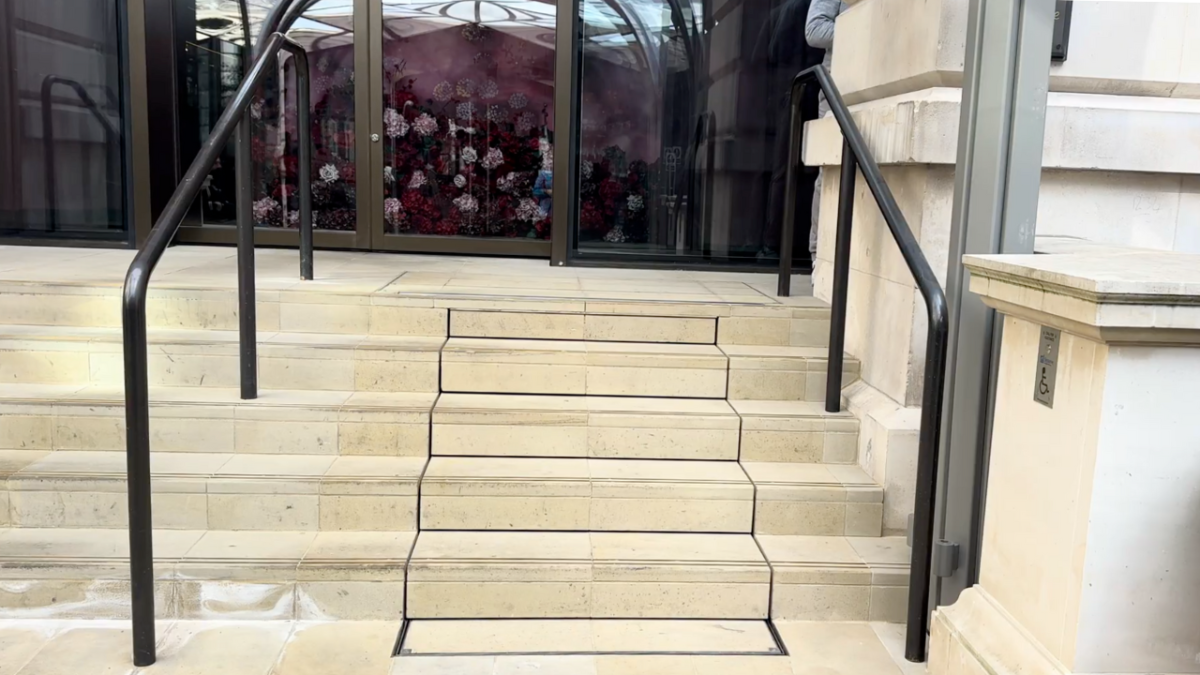Key Takeaways
-
UK platform lifts are governed by BS 6440:2011, which prioritises press-and-hold safety controls over automation.
-
Automatic fire alarm integration is not permitted under this standard for open, unenclosed platform lifts.
-
Safe use is achieved through management procedures and built-in communication systems.
-
Sesame Access ensures full compliance while maintaining ease of use and architectural harmony.
Introduction
A frequent question from architects and building managers is:
“Why can’t our platform lift automatically respond when the fire alarm is triggered?”
Although automation seems convenient, UK safety standards specifically prevent it. This article explains why automatic fire alarm integration is not allowed, how BS 6440:2011 ensures safety through manual control, and how Sesame Access provides compliant and user-friendly solutions that prioritise accessibility and reliability.
BS 6440:2011: Mandating Press-and-Hold Controls for Wheelchair Platform Lift Safety
BS 6440:2011 defines the design and safety requirements for lifting platforms serving disabled users. It mandates that all platform movement must be controlled through a continuous press-and-hold action.
This ensures that:
-
The user remains fully in control while travelling.
-
The lift stops immediately if the button is released.
-
Movement cannot occur without active human engagement.
While modern programming can easily enable automatic responses, such functions cannot be certified under BS 6440:2011. Any deviation would fall under the broader Machinery Directive, changing the classification of the equipment entirely. Sesame Access therefore maintains full compliance by designing lifts strictly within the standard’s defined parameters.
Why Automatic Fire Alarm Integration Is Not Allowed
Platform lifts are considered open, unenclosed devices. If a fire alarm were to trigger an automated descent while someone was using the lift, there would be a risk of movement while the user was incapacitated or obstructed. The lift could attempt to return to stair mode while occupied, creating a potential hazard.
For this reason, BS 6440:2011 prohibits automatic motion and requires user or staff control at all times. The restriction is a deliberate safety safeguard, not a technical limitation.
The Compliant Solution: Implementing Staff Management Protocols
Since automation cannot be used, safe operation is achieved through a simple management protocol. When a fire alarm sounds, trained staff members return the lift to stair mode and power it down. This method aligns with best practice across hundreds of Sesame Access installations and ensures both safety and compliance.
Buildings such as schools, theatres, and civic institutions commonly adopt this approach, where staff supervision forms part of the building’s emergency plan.
Built-in Communication Systems for Staff Coordination
Many Sesame lifts include integrated communication systems to support managed operation. A call-for-assistance button at the lower landing connects directly to reception or a designated staff area, allowing immediate coordination during emergencies or routine use.
This feature ensures that users can always request help when needed. It is particularly effective in reception-based environments, such as schools or visitor centres, where lift operation is overseen by trained staff.
Common Concerns: Why Not Eliminate Human Error Through Automation?
It’s natural to assume that automating fire procedures could reduce human error. However, BS 6440:2011 is designed on the principle that human awareness enhances safety. By requiring manual control, the standard prevents unexpected or unsupervised motion that could put users at risk.
As one client insightfully noted, the odds of someone being on a lift at the exact moment a fire alarm sounds are extremely low. Across more than 350 Sesame installations, this situation has never occurred. Still, each installation includes clear management procedures to ensure preparedness without compromising safety standards.
Risk vs. Reality: Real-World Context
In real-world use, the combination of human oversight, clear procedures, and reliable mechanical safeguards has proven to be the safest system. While automation could theoretically reduce response time, it introduces other risks — especially for wheelchair users who depend on stable, predictable movement.
Sesame Access continues to balance innovation with safety, ensuring that every installation meets both the spirit and the letter of BS 6440:2011.
Practical Application in Reception Area Accessibility
In many schools and public buildings, platform lifts are located near reception areas, allowing staff to oversee their use. The Kensington Stairlift, Wellington Lift, and Mayfair Stairlift are examples of bespoke Sesame designs that integrate seamlessly into such settings while maintaining full compliance and ease of access.
This approach combines architectural discretion with operational reliability, ensuring that accessibility is provided without compromising safety or aesthetic intent.
Balancing Innovation and Compliance
Automation in accessibility technology must always respect the underlying safety framework. Sesame Access focuses on engineering innovation that enhances usability while maintaining compliance with British Standards. Every design decision prioritises user safety, system reliability, and long-term maintainability.
For further reading:
Frequently Asked Questions (FAQ)
Q1: Can a platform lift be programmed to return to the ground floor automatically?
No. Under BS 6440:2011, lifts must use manual press-and-hold operation for safety reasons.
Q2: What happens during a fire alarm?
Trained staff follow a management procedure, returning the lift to stair mode and ensuring users are clear.
Q3: Why are standing passengers not permitted?
Since 2011, BS 6440 has classified these lifts for seated or wheelchair users only.
Q4: Can lifts include intercoms or assistance buttons?
Yes. Many Sesame lifts include call-for-assistance buttons connecting to reception or building management teams.
Q5: How common are fire alarm incidents involving platform lifts?
In over 350 installations, no such incidents have occurred, thanks to robust design and staff training.
Call to Action
To discuss compliant platform lift design or fire safety integration for your next project, book a Teams Meeting with one of our Project Managers:
👉 Book a Meeting

